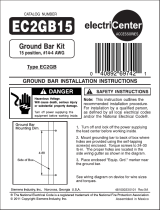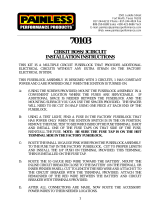The Generac 16 kW 0062571 is a powerful and reliable home standby generator that can keep your essential appliances and systems running during a power outage. With its automatic transfer switch, it can seamlessly switch your home's power from the utility grid to the generator in as fast as 10 seconds, ensuring that you and your family stay safe and comfortable during any emergency.
The Generac 16 kW 0062571 is a powerful and reliable home standby generator that can keep your essential appliances and systems running during a power outage. With its automatic transfer switch, it can seamlessly switch your home's power from the utility grid to the generator in as fast as 10 seconds, ensuring that you and your family stay safe and comfortable during any emergency.




















-
 1
1
-
 2
2
-
 3
3
-
 4
4
-
 5
5
-
 6
6
-
 7
7
-
 8
8
-
 9
9
-
 10
10
-
 11
11
-
 12
12
-
 13
13
-
 14
14
-
 15
15
-
 16
16
-
 17
17
-
 18
18
-
 19
19
-
 20
20
-
 21
21
-
 22
22
-
 23
23
-
 24
24
-
 25
25
-
 26
26
-
 27
27
-
 28
28
-
 29
29
-
 30
30
-
 31
31
-
 32
32
-
 33
33
-
 34
34
-
 35
35
-
 36
36
-
 37
37
-
 38
38
-
 39
39
-
 40
40
The Generac 16 kW 0062571 is a powerful and reliable home standby generator that can keep your essential appliances and systems running during a power outage. With its automatic transfer switch, it can seamlessly switch your home's power from the utility grid to the generator in as fast as 10 seconds, ensuring that you and your family stay safe and comfortable during any emergency.
Ask a question and I''ll find the answer in the document
Finding information in a document is now easier with AI
Other documents
-
Generac Power Systems 004635-2 User manual
-
Intermatic PE153 Operating instructions
-
 Siemens Energy & Automation EC2GB15 User manual
Siemens Energy & Automation EC2GB15 User manual
-
Siemens SR200R User manual
-
Siemens ECGB14 User manual
-
Hubbell Wiring Device-Kellems PD1149 Installation guide
-
Honda HP2S-EU3000 User manual
-
Reliance Controls R306A Installation guide
-
Lightolier 9196 User manual
-
 Painless Wiring 70103 Installation guide
Painless Wiring 70103 Installation guide









































